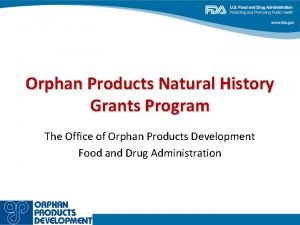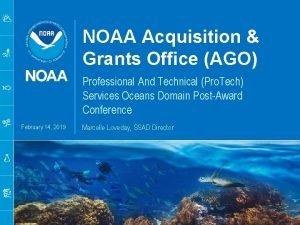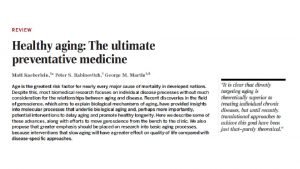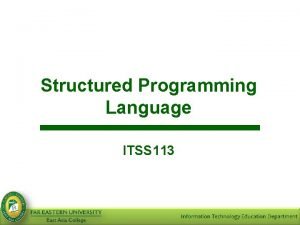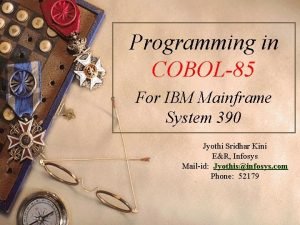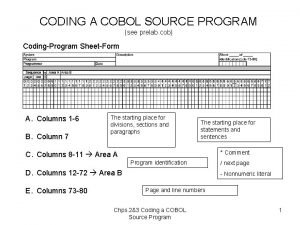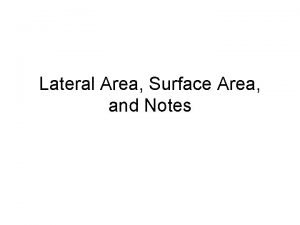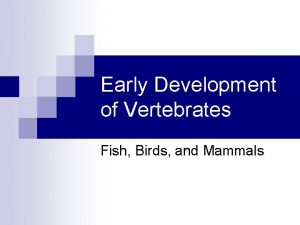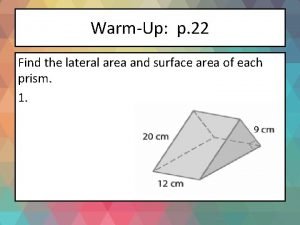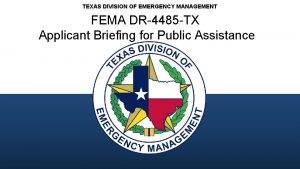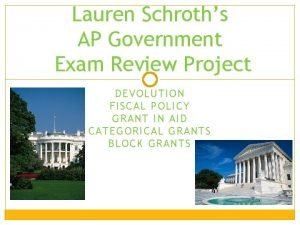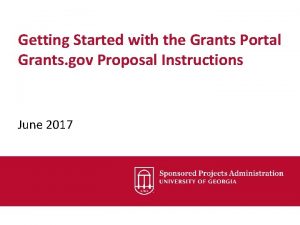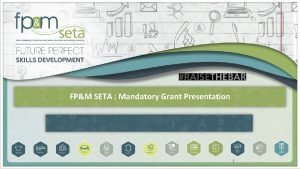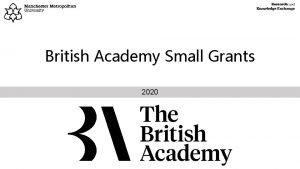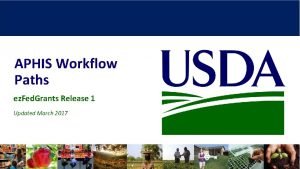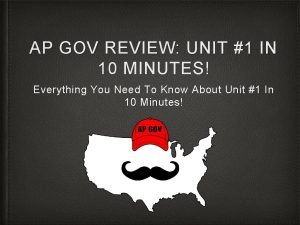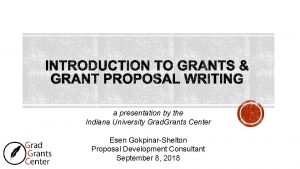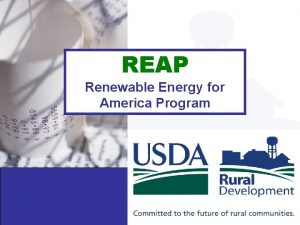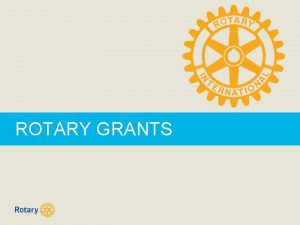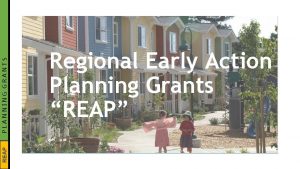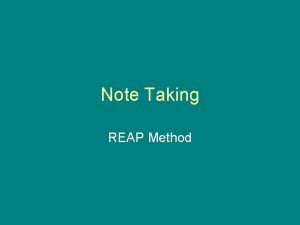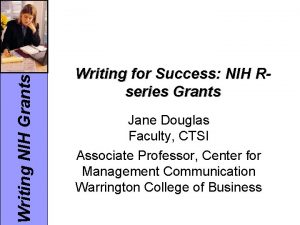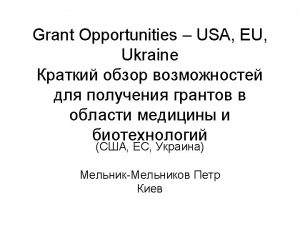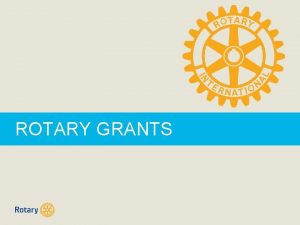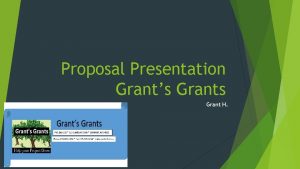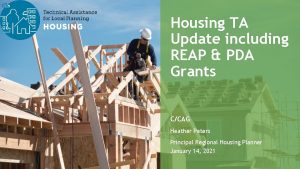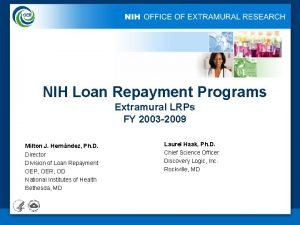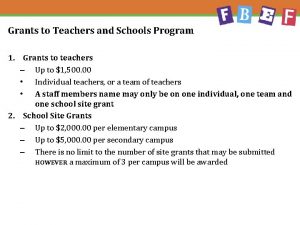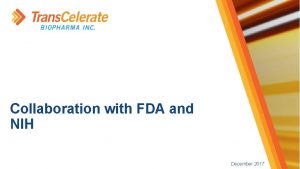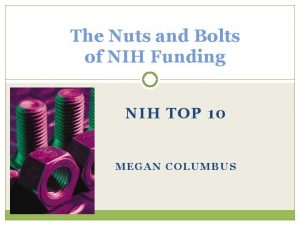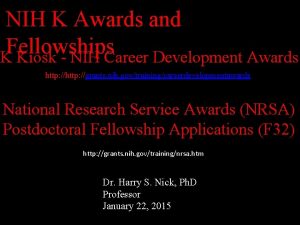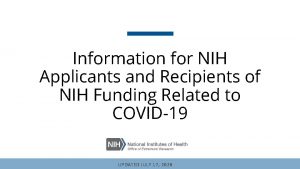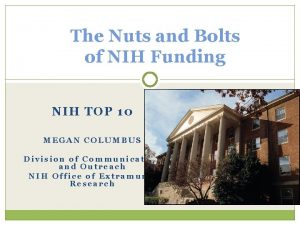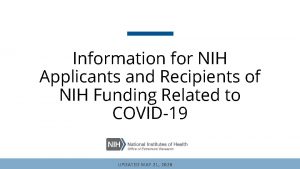NIH R 15 PROGRAM AREA AND REAP GRANTS

































- Slides: 33

NIH R 15 PROGRAM: AREA AND REAP GRANTS MICHELLE HAMLET, PHD DIVISION OF EXTRAMURAL SCIENCES NATIONAL INSTITUTE OF NURSING RESEARCH

TODAY’S TOPICS • Overview of R 15 Program goals • How to read R 15 Funding Opportunity Announcements (FOAs) • Learn how R 15 applications and projects differ from R 01 s • Differences between AREA and REAP • Strategies for success

R 15 FOA OPTIONS • Academic Research Enhancement Award (AREA) • Undergraduate-Focused Institutions • PAR-18 -714 (no Clinical Trial, [CT]) and PAR-19 -133 (CT) • Research Enhancement Award Program (REAP) • Health Professional Schools and Graduate Schools • PAR-19 -134 (no CT) and PAR-19 -135 (CT)

PROGRAM GOALS • Strengthen basic and clinical research environment at institutions without significant NIH funding • Support meritorious research • Expose students to primary research

KEY FEATURES • Research Grant mechanism • Up to $300, 000 direct cost to be spent over 3 year-project period • 12 -page Research Strategy - Same review criteria as R 01 with different emphasis • Grants are renewable

R 15 VS. R 01 • Overall impact of R 15 differs from R 01 o o Smaller-scale research projects Scope aligned with available and requested resources • Must describe opportunities for students • Must describe how award will strengthen research environment of the institution

R 15 -SPECIFIC ELIGIBILITY CRITERIA: PART 2, SECTION III, PART 1

AREA AND REAP ARE MUTUALLY EXCLUSIVE • Each program targets a different pool of faculty • REAP: faculty at Health Professional Schools or Graduate Schools • AREA: faculty at undergraduate-focused schools and colleges (not Health Professional or Graduate) • Institution could have faculty eligible for each program • However…individual faculty cannot apply for both R 15 programs

R 15 PRIMARY FACULTY APPOINTMENT

R 15 PI ELIGIBILITY CRITERIA: PRIMARY FACULTY APPOINTMENT Primary appointment at eligible institution • REAP Heath Professional School or Graduate School faculty PAR-19 -134 (no CT) and PAR-19 -135 (CT) • AREA Non-Health Professional School faculty PAR-18 -714 (no CT) and PAR-19 -133 (CT)

R 15 PI ELIGIBILITY: MULTIPLE PI (MPI) AND COLLABORATORS • • MPI is OK, if all are FOA-eligible What about an ineligible collaborator? • Yes! • However…. Be mindful of the intent and unique goals of the R 15 • Majority of research should be directed by PI at grantee institution • Student profile & student inclusion are for applicant/eligible component

OTHER R 15 PI ELIGIBILITY CRITERIA • PI may not have an active NIH grant at time of award* • Can be Key Personnel on another PI’s research NIH grant • *Instrumentation awards (S 10), conference grants (R 13) and institutional training grants (T 32 s) do not count against R 15 PI eligibility

ORGANIZATION ELIGIBILITY - AREA • All non-health professional components of the institution must have no more than $6 million per year in 4 of the last 7 years of total NIH support • Health professional schools not included in this calculation • Undergraduate enrollment MUST be greater than graduate enrollment in the non-health professional school

AREA ELIGIBILITY

ORGANIZATION ELIGIBILITY - REAP • The entire institution (all components) must have no more than $6 million per year of NIH support in 4 of the last 7 years • Includes support for non-health professional and health professional schools • Undergraduate enrollment level is not a factor for eligibility

REAP ELIGIBILITY

RECONSIDER REAP ELIGIBILITY BY CHANGING FUNDING STATUS

REAP ELIGIBILITY SCENARIO II Non-Health Professional and Health professional Schools Painted Desert University

PROVOST LETTER • Both AREA and REAP require a signed letter from the Provost or similar official verifying eligibility as specified in the appropriate FOA • Applications submitted without this letter will be withdrawn and returned without review.

APPLICATION INSTRUCTIONS: PART 2, SECTION IV, PART 2

BEFORE WRITING SUBMISSION • • • Read FOA carefully Write an abstract and sketch out some specific aims Useful tool: Matchmaker of NIH Reporter (https: //projectreporter. nih. gov/reporter _matchmaker. cfm) • • Check the NIH Institute mission statement page Talk to a Program Officer

BEFORE WRITING SUBMISSION-CHECK OUT ‘RELATED NOTICES’ SECTION

THE ART OF CRAFTING AN R 15 APPLICATION • Scientifically meaningful - Interesting questions & publishable data • Feasible - Resources - Effort - Students • Appropriate scope • Describe your environment

FOA HAS R 15 -SPECIFIC INSTRUCTIONS • • Other Project Information: Facilities and Other Resources Budget Biographical sketch Research Plan: Research Strategy Include a resource sharing plan!

RESEARCH STRATEGY • Should touch each review criteria & program goals • Preliminary data - Reviewers can and will evaluate submitted data • Required to demonstrate appropriateness of project and group, including students • Description of involvement & oversight of students

HOW STUDENTS WILL BE INVOLVED? Examples provided in both FOAs • • • Perform & troubleshoot experiments Present at (lab) meetings & (campus) conferences (Help) design experiments Collect & analyze data Draft articles Collaborative interactions

STUDENT INVOLVEMENT SHOULD BE MEANINGFUL • Quality of student involvement • Not sufficient to say “there will also be a couple undergrads (with an unspecified or insignificant role)” • Mention how students will be recruited and student level (freshman – senior) for AREA, or graduate students for REAP

THE BUDGET • • R 15 is multi-year award Budget for all years must be requested in first budget year Budget justification should align with program goals Can support the following, for example: - Student wages - Collaborator salaries (subawards) - Travel

REVIEW CRITERIA: PART 2, SECTION V, PART 1

R 15 APPLICATION REVIEW • Special Emphasis Panel for R 15 applications • Clustered within standing study sections • Reviewers use review criteria as listed in the FOA

INSTITUTIONS • • Accredited public or non-profit private school conferring baccalaureate or advanced degrees in biomed and behavioral sciences Confirm institutional eligibility for appropriate R 15 FOA Include Provost letter that confirms institutional eligibility Activity codes C 06, S 10 and all codes that start with ‘G’ do not count against eligibility

APPLICANTS • • Be familiar with the FOA goals and review criteria - address each question in your application Pick a compelling research topic that aligns with institute of interest State the significance – be articulate, avoid jargon, and write for the expert and non-expert Propose a realistic scope Propose clear hypotheses Include meaningful student involvement, but not a training grant Consider collaborators

QUESTIONS
 Reference of globalization
Reference of globalization R15 reap
R15 reap Don't judge each day by the harvest you reap
Don't judge each day by the harvest you reap Those who sow sparingly
Those who sow sparingly Law of the harvest
Law of the harvest Orphan products grants program
Orphan products grants program Noaa acquisition and grants office
Noaa acquisition and grants office Lcif grants and donations
Lcif grants and donations How did land grants and new roads affect brazil?
How did land grants and new roads affect brazil? List of nih institutes
List of nih institutes Cobol area a and area b
Cobol area a and area b Cobol area a and area b
Cobol area a and area b Wet curved surface area
Wet curved surface area Cobol cheat sheet
Cobol cheat sheet Lateral surface area examples
Lateral surface area examples Lateral area def
Lateral area def Gastrulation
Gastrulation Find the lateral area and surface area of each prism
Find the lateral area and surface area of each prism Tdem grants management system
Tdem grants management system Ez fed grants
Ez fed grants Grants online noaa
Grants online noaa Grants ap gov
Grants ap gov Emd serono grant portal
Emd serono grant portal Uga grant portal
Uga grant portal Seta mandatory grant
Seta mandatory grant Grants ap gov
Grants ap gov Ez fed grants login
Ez fed grants login British academy small grant
British academy small grant Arts council national lottery project grants
Arts council national lottery project grants Ezfed grants
Ezfed grants Grants ap gov
Grants ap gov Iu grad grants
Iu grad grants Hesaa njfams
Hesaa njfams Dep environmental education grants
Dep environmental education grants





